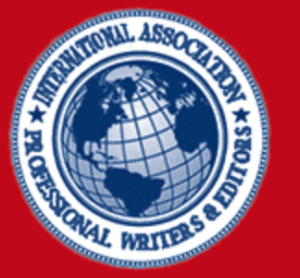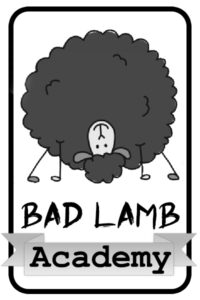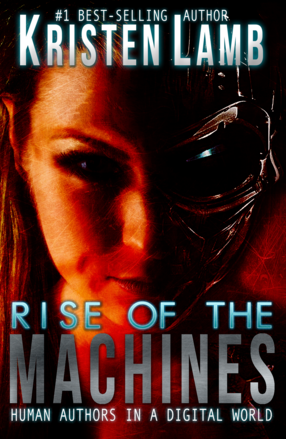The eyes of Bob Mayer are upon you. Inscrutable eyes. New York subway-stare eyes. Once you take his Warrior Writer class, they lurk forever in the recesses of your mind.
Just a few moments ago, I wrote the last word of the first draft of my second novel. Maybe you have too, or will soon (how’s your National Novel Writing Month piece coming?). The Eyes of Bob are looking at us. What do we do now?
I’ve got my notes from Bob’s class in July in front of me. Yeah, here it is: “Revising/Rewriting.” This is what I wrote:
Revise/rewrite in three stages:
- Plot arc
- Character arc
- Symbolism arc
That third one alone made my mind race for two weeks. But let’s save it for last, and look briefly at each one — think of this as my interpretation of the wisdom of the Master Warrior Writer. Pretentious, perhaps, but I am what I am. (Note: Also see Bob’s The Novel Writer’s Toolkit, especially “Tool Seven: Your Finesse.”)
Plot Arc
Step back. Way back. A bit father. Look at your story without seeing the words or paragraphs or scenes. Notice where it starts, where it goes, and where it ends. You know, big picture stuff.
That’s it, really.
All that’s left is the nearly impossible: Pretend that you didn’t give birth to this story, and decide if the plot arc works like a reader would see it. Ask yourself questions like these:
Does the subplot overtake the main plot?
Does the story flow logically?
Does the antagonist overcome obstacles placed by the antagonist and successfully reach the original goal; succumb to the obstacles; or change his/her mind and abandon the original desire?
If you don’t like your answers, the writer in you has to come back out and re-compose the story where it needs fixing.
As Bob says, “Everything is fixable. Just keep writing.”
But it’s not always easy. Those scenes you wrote that you think are your best writing ever? If they don’t fit the plot arc that best shows the story, you’ve got to kill them. Chalk it up to the warrior.
Character Arc
Bob takes every scene that contains a character and pastes it into a document with that character’s name. Then from time to time he reads through it to make sure the character isn’t drifting, acquiring a British accent, losing an arm without explanation, or scurrying off in quest of a subplot goal rather than a main plot goal.
It’s easy to get too detailed too quickly. Don’t focus on the small stuff, at least at first. Keep the word “arc” in mind — that’s a big thing. That’s where a character starts, the hinge points (where the character changes), and the ending point. The rest is just detail. Here are some guiding questions:
Does the antagonist go through a series of changes that are plausible and in keeping with the plot arc?
Does the protagonist also change in a realistic way that feeds the plot arc?
Are your main characters always clearly the main characters?
Once again, if you don’t like your honest answers, then you’ve got to get in there and kill, kill, kill … and build again.
Symbolism Arc
This is my favorite. Symbolism and motifs are fascinating. Bob says our subconscious writer always throws these in, and our challenge is to recognize them and elevate them into conscious building blocks that support the story.
Bob defines symbolism as “images or actions that parallel or foreshadow the theme or plot of the book.”
The most important function of symbolism is to show the reader without telling them; or, even better, allow the reader to discover symbols that lead to a richer understanding of the meaning of the book. Readers love that.
Bob suggests watching for uses of images that come (or could come) in threes. In the manuscript I just finished, for instance, there’s a symbol of a face within a face carved on an amulet of mammoth bone. I later have the protagonist paint a face on his forehead similar to the amulet. That’s two uses. I like the symbol because it alludes to the main character’s identity issues, so in revision, I want to add a third face-within-a-face image to give it the full punch of a symbolic triple image.
This is such a great tool, because, as Bob says, “Everything introduced in a book should be used several times.” If it’s not, then it’s probably not important. Cut it out. Most things that appear only once are dangling scenes or information dumps for our sake and not the reader’s, things that do not advance the book. That’s why the keyboard gods give us the delete key. Use it well. Your readers (and editors and agents) will thank you. Most writers don’t have the warrior’s discipline to kill enough of their own precious words.
The whole point is making the story as good as it possibly can be.
As Bob says, “The story is everything.” A good story well told trumps everything else in the business most of the time. Which is good. As writers, that’s the only thing over which we have full control.
Happy Warrior Writing/Revising/Rewriting.
# # #
Jeff Posey writes historical and contemporary fiction informed by archaeological findings of the Anasazi culture of the Southwestern U.S. a thousand years ago. He blogs as Anasazi Stories by Jeff Posey, and enjoys his Twitter buddies as AnasaziStories.









3 comments
Great stuff, Jeff.
I would take your character arc one step further and say that each character must have a smaller arc in each scene. The character must be somehow different at the end of the scene from the beginning.
And yeah…I feel Bob’s eyes watching me too…like my muse looks like him. But he has a gun in one hand and a lit cigarette in the other, sitting on my monitor, looking down at what I wrote and shaking his head. I am still wondering when he’s going to raise the business end of the gun, or offer me a congralutory smoke…
I revise as I write– right now, I’m cleaning up my first 60 pages of my new book started just this month. I actually watched Gone With The Wind last night and made notes on the story arc and character development in it. I’d never seen it before and it was very well done. Strong characters.
I wonder if its a bad thing to write the first draft knowing that I will come back and edit it later? Maybe I should invest more time in the first draft so that I don’t need to spend so much time revising the second draft, but (for me) I feel like the first draft should be hammering out the plot. Then I can work more intensively on all the specific parts.
Also, I think my antagonist is a place rather than a person. Is this possible?